Plywood stools: types and do-it-yourself creation

Furnishing the kitchen, living room, office, veranda with chairs, armchairs, perhaps, having purchased a sofa complete with an armchair, people often forget about such a simple assistant as a stool. One or two stools on the farm will help more than once where a full-fledged staircase is useless. Bringing a chair or chair can be difficult and inconvenient. They are indispensable where there is no place for a chair or armchair, and it is quite possible to make such furniture with your own hands.
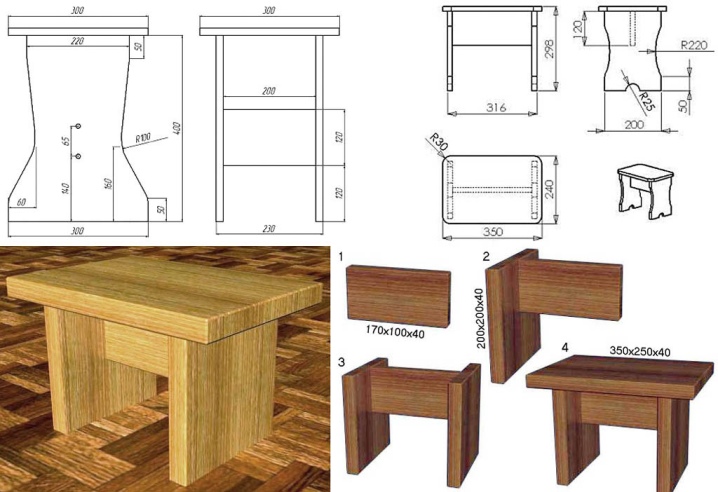
Views
A simple stool consists of 4 legs screwed to the seat with a metal frame or "triangles". A more "advanced" version is to use, instead of legs, several free-form plywood sheets, which are limited only by the designer's imagination.
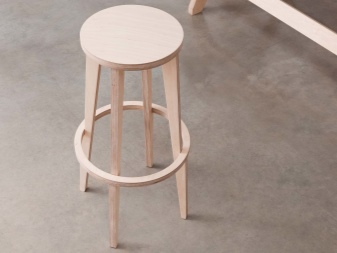
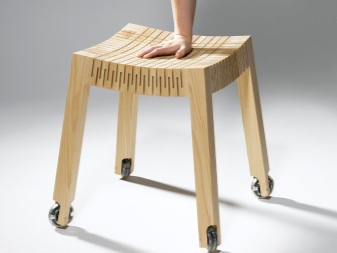
Stepladder stool - a product with a small flight of stairs, in which the horizontal steps form an upward flight of stairs at an angle of 75-80 degrees. The latter is the “brother” of the bar stool: the simplest ladder is used on the furniture for bars, allowing a visitor or a waiter to sit down on a seat near the bar counter.
Unlike an ordinary kitchen stool, whose height is 45-55 cm, the bar stool has a height of 70-100 cm. The "stirrup" can be even higher - up to 120 cm.
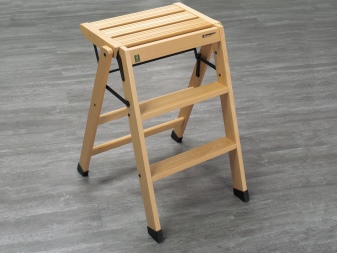

The folding stool has hinge hinges. It is possible to fold in such a transformer both the seat (partially) and the supporting part - the legs or sheets of plywood stylized for them, having a pretentious shape. To prevent such a structure from collapsing and a person to fall, a locking element of the "locking" type is provided in the hinges. Foldable can be made as an ordinary kitchen, and "ladder" (including bar) stool.
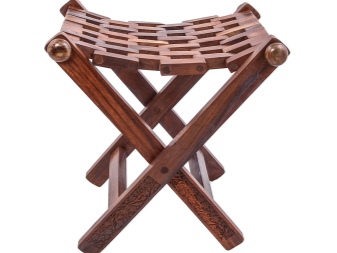

The garden stool has flat and wide supports at the ends of the legs. They protect the sharp ends from sinking into loose soil. Otherwise, this subspecies of a bench differs little from an ordinary kitchen item - it can be only half the size of a kitchen one, for example, when a person performs small gardening work.
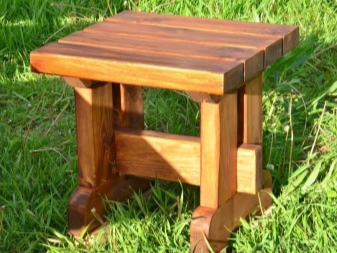

Wicker stool - a design solution for the kitchen-living room, verandas or even bedrooms. The supporting structure is braided with rods made of exotic tree-like plants.
But in the simplest case, a young vine, only this year finally lignified, can be used.
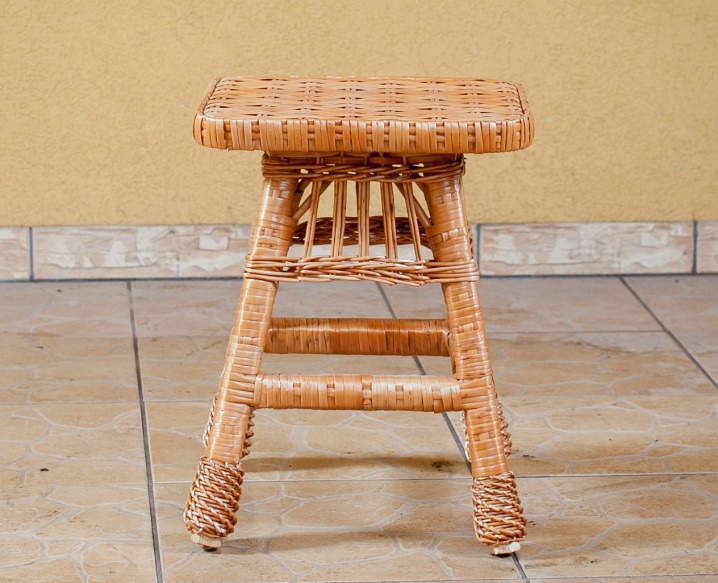
What is required?
From materials other than plywood, for the manufacture of a stool you will need carpentry (or epoxy) glue, stainless (or brass) screws, waterproof varnish.
From the tools you will need a jigsaw, an electric or hand drill, a router, a screwdriver (or a screwdriver with bits), a pencil, a tape measure, a grinder (with a circular saw for wood), a square, a brush, a mallet (or a regular hammer), a boot knife, a plane, clamps.
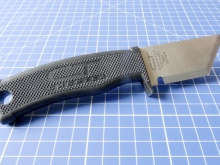
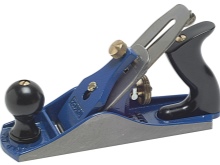

Schemes and drawings
Any of dozens of sketches are suitable as a diagram. These can be both the simplest U- and S-shaped structures with designer cutouts, as well as classic options with separate legs or boards set by the edge, sawn into any profile. Particular attention is paid to stools-"eight" (construction "hourglass"), in which the lower edge, in contact with the floor, may be absent. A stool can have a small back, be made in the form of a stylized regular polyhedron, an inverted truncated cone or pyramid, a small barrel without some side walls (edges).
In general, the imagination of designers knows no bounds.But constructions like a cube or a parallelepiped are more related to ottomans than stools.
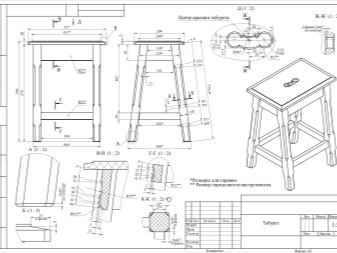
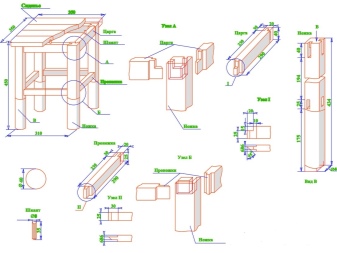
A scheme for sawing a tree into its component parts can be drawn with a pencil on a Whatman paper. If there is no Whatman paper, use an unfolded cardboard box from any device. For example, a package from a TV or an oil cooler, preserved from the time of purchase of this device, is suitable. To make all the lines clearly visible, use a marker or ballpoint pen in a color that contrasts with the color scheme of your cardboard. Next, cut open your drawing with a mounting blade or a clerical knife - these knives are as sharp as a razor blade. All the details in a 1: 1 ratio are then transferred to a sheet of plywood - you just need to lay out the sketches side by side, compactly, saving space on the plywood, and carefully circle them. This is one of the easiest ways to outline plywood. Experienced craftsmen draw the details directly on the plywood.
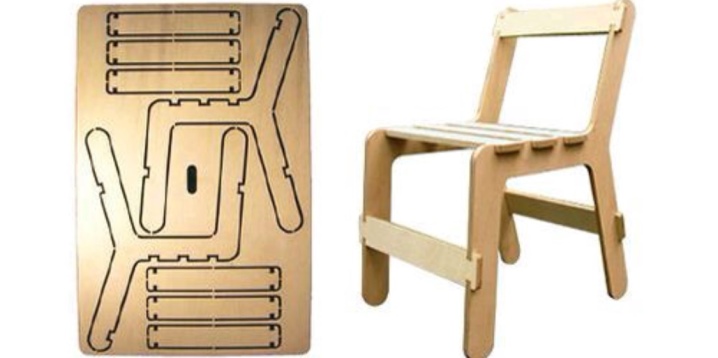
How to make it yourself?
After the details of the design you have chosen are lined up and the plywood is ready for cutting, you can start this process. To speed up the cutting of plywood several times, you cannot do without a jigsaw. As an example, an original "lattice" structure is suitable, which can be made collapsible without gluing and screwing its parts.
The disadvantage is that over time, your collapsible stool will loosen its technological grooves and ends, and you still have to glue and screw it together, thereby turning it into a non-collapsible object.

The fact is that any wood wears out over time, and the grooves, cracks become somewhat larger - this reduces the stability of the structure.
We do the following.
- With the help of a hand and jigsaw, we carefully and very accurately cut out all the details. You need to apply more force (pressing, down) to the side of the "seamy" part, and not vice versa: solid board and plywood often give multiple chips along the saw (cutter).
- If the plywood is low-grade and excessively rough, sand it with emery (or use a sander with special brushes or sanding discs). In order not to fiddle with each part separately, grab all the same ones - for example, the elements of the seat flooring, with the help of clamps.
- Use a plane to cut a 3 mm chamfer from the outer edges (edges) of the parts. When carrying the stool, it will not cut into your fingers. And it will be more pleasant to sit on it.
- Place the supporting (vertical) elements perpendicular to the floor. Use a hammer or mallet to hammer in the two lower horizontal bars that hold the supports of the stool to be assembled, preventing them from moving apart.
- Install all top rungs, keeping the same spacing from the edges of the supporting structure.
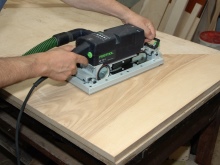

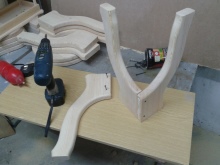
If the structure is still not dense, but wobbly, do the following.
- Sand all mating surfaces with coarse sandpaper.
- Drill holes for self-tapping screws in the details. The diameter of the drill is chosen slightly less than the diameter of the self-tapping screw. For example, for a self-tapping "five", a drill with a diameter of 3.5-4 mm is required.
- Spread and apply epoxy glue to the parts where they touch.
- Fix the structure in all places by screwing in self-tapping screws.
- Check your structure for evenness, lack of skew, using a level, plumb line, laser or other means of increased accuracy.
The stool is ready, you can put it in a safe place for a day. Almost any adhesive takes 24 hours to fully cure and dry.
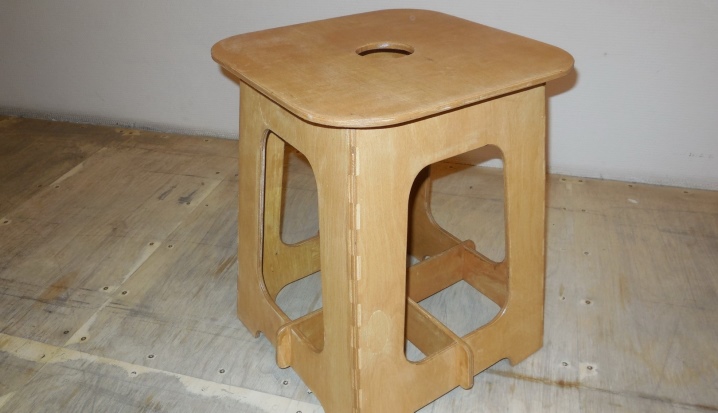
It is impossible to screw in self-tapping screws without reaming - the layers of plywood will begin to separate from each other. Then, before drilling, it will be necessary to glue the cracked plates, peeling layers of plywood before drilling. Only in this case will they stand back, in their place, where they should be.
If a classic old-style stool is being made, then a solid piece of chipboard is also suitable as a seat. But remember that such a plate is afraid of moisture - in a day it irreversibly swells, loosens, becomes unsuitable for further use, and is easily subject to decay. Therefore, the chipboard is not just coated, but thoroughly, abundantly and in several layers, it is impregnated with a waterproof varnish - for example, parquet, which contains "epoxy". It "seals" the chipboard sawdust tightly, not allowing water to come to them.
How to make a stool in an hour, see below.













The comment was sent successfully.